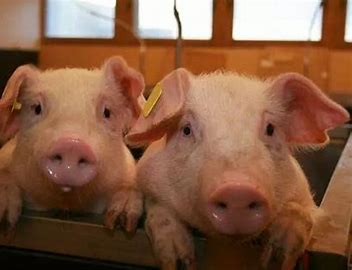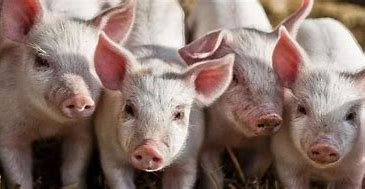
Release Date:2024.09.25
1. Overview of African Swine Fever
African swine fever (ASF) is an acute, hemorrhagic and severe infectious disease of pigs caused by African swine fever virus (ASFV). The disease has an acute onset and a mortality rate of 90% ~ 100%. At present, there is no effective vaccine and prevention drug, which is one of the most serious diseases to pig farming.
2. Transmission routes of African swine fever
(1) Direct contact. Asf virus can be spread through direct contact, such as through contact with infected pigs, pork or other infected animals or items.
(2) Feeding contaminated feed or water. Asf virus can be transmitted through the feeding of contaminated feed or water, especially from infected pigs or other animals.
(3) Tick transmission. Asf virus can multiply in ticks and be transmitted to pigs through tick bites.
(4) Vehicles and personnel. Vehicles and people can carry the virus to other places, spreading the disease.

3. Key points of African swine fever prevention and control in large-scale pig farms
3.1 Scientific site selection
The site selection of pig farm should be open terrain, high terrain, flat ground, leeward to the sun, sufficient water source, excellent water quality, good soil permeability, easy to discharge and treat production sewage, easy to prevent epidemic, etc.
3.2 Careful introduction
Before introduction, it is necessary to fully understand the epidemic situation of the introduction farm and the surrounding pig farms, and it is forbidden to introduce from the area where African swine fever has occurred. The imported pig farm can provide the test certificate of African swine fever within the past 7 days, and can declare and quarantine according to the relevant regulations on pig transportation.
3.3 Improve the immunity of pigs
Pig immunity is strong, anti-virus ability is strong, pig is not easy to get sick, the following measures can improve pig herd immunity. 1) Strengthen feeding management; 2) Improve the nutritional level of pig herds; 3) Use of antiviral drugs; 4) Strengthen monitoring.
3.4 Comprehensive disinfection of the farm
The choice of disinfectant and disinfection method depends on a variety of factors, such as the type of virus, the composition of the disinfectant, the effectiveness and safety of the disinfection method, etc.
3.5 Closed management of breeders
Contact between breeders and the outside world is the most direct and common way to spread ASF. Once it is found that there is an African swine fever epidemic around, it is recommended that the breeder in the pig farm should strictly implement disinfection when entering and leaving the enclosure.
3.6 Strengthen the biosafety construction system
3.6.1 Ensure the effectiveness of biosafety
The key to ensuring the effectiveness of biosecurity measures is to consistently implement them, and to continuously check and improve them during implementation to ensure that they are always effective.
(1) Formulate and comply with a scientific and reasonable biosafety plan. The plan should take into account the location of the pig farm, the way people, animals and items enter and exit the farm, and the types of pathogens and risk levels present in the farm.
(2) Regular inspection and evaluation. Check the implementation of biosecurity measures on pig farms regularly, evaluate their effects, and solve problems in time when they are found.
(3) Update biosecurity measures. The environment and situation of pig farms may change over time, and biosecurity measures also need to be constantly updated and improved to ensure that they are always effective.
3.6.2 Regularly evaluate biosafety effects
Regular evaluation of the effectiveness of biosafety measures in pig farms is very important to help pig farms identify areas for improvement and ensure the effectiveness of biosafety measures. The effect of biosecurity measures can be assessed through the following points.
(1) Health status of pigs. The pigs were observed for abnormal behaviors or manifestations, such as loss of appetite, increased body temperature, and difficulty breathing. If the pigs are in good health, the biosecurity measures are working.
(2) Detection of pathogens. Pigs can be tested regularly for pathogens to see if a particular pathogen is present in the herd. If the test results show no pathogens in the herd, the biosecurity measures are working to stop the pathogen from invading.
(3) Evaluate the implementation of biosecurity measures. Check whether the biosecurity measures of the pig farm have been effectively implemented, including whether the staff have received training, whether the biosecurity measures have been effectively implemented, and whether the pig farm has been regularly disinfected, etc.
(4) Data analysis. Farm production data such as feed usage, vaccination rates, and pig mortality can be collected and analyzed to assess the impact of biosecurity measures on farm production efficiency.

4 Conclusion
African swine fever (ASF) is still the main disease restricting the development of swine industry in China. Experts at the International Pig Congress indicated that scientific and effective prevention and control work should be carried out on the basis of understanding its pathogenesis and transmission routes, especially for small and medium-sized pig farms, and the construction of biosafety system should be strengthened. To ensure the effectiveness of pig farm biosafety by constantly improving staff biosafety awareness and regularly evaluating biosafety effect, only in this way can the healthy development of the enterprise be realized.
If you would like to learn more about the pig industry, please visit the Leman China Swine Conference website for more information.
Source:SWINE INDUSTRY SCIENCE
If there is any infringement, please contact to delete.